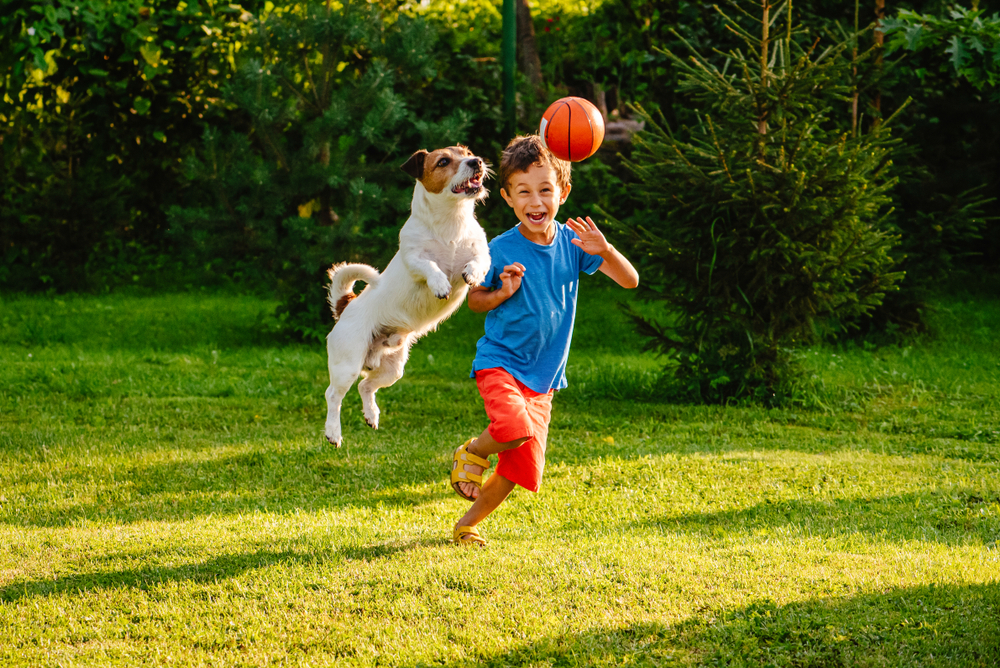Pets provide an excellent learning opportunity for children and can serve as companions, friends, and confidants. They teach children important life lessons, including responsibility, respect for living things, relationship development, love, and loss. However, pets can also harm children if they are not properly acclimated to one another. Preparing and training your pets, educating your children, and supervising interactions are key to keeping everyone safe. The Mobile Cat & Dog Vet team shares the steps necessary for introducing kids and pets.
#1: Acclimate pets to household changes before bringing home baby
If you’re having your first child, your pet is in for a rude awakening. The household rules will change, as you will have less time to spend with your pet, who will not understand a new child. Build baby furniture, put up gates, and move things around a few months in advance, and give your pet treats so they make positive associations with these items. This is especially helpful for cats, who are easily stressed.
You will have less time to exercise your dog, and your schedule could become less predictable. Try to vary feeding and walking times by an hour or two each day, or consider hiring a dog walker or taking your pet to daycare a few times per week. Plan ahead, and the transition will be smoother when the baby arrives.
If you have children and the pet is your household’s new addition, work closely with adoption counselors or breeders to ensure your chosen pet enjoys your children’s company.
#2: Teach pets the skills they need to interact with children
Pets should learn several skills to help them deal with the new household addition. You can enlist the help of a trainer or work on these skills in short sessions yourself. Focus on the following skills:
- “Go to the mat” — Training pets to lie down and stay on a mat, rug, blanket, or bed is an easy default if you need them to leave quickly.
- “Go away” — This command teaches your pet that walking away is always an option if they feel stressed.
- “Leave it” — “Leave it” or “Drop it” will be important when your child drops food or belongings.
- “Crate” — Your pet should be comfortable with confinement in a crate or behind a gate if you need time to care for your child, or your pet is overexcited or stressed and needs a break.
#3: Ensure pets have a safe retreat from children
If your pet has a quiet, safe, comfortable space away from the children, they are less likely to feel cornered or threatened during an uncomfortable interaction. A crate or a room is suitable for a dog and a quiet room or vertical area works for a cat. When your children are old enough to understand, teach them that they must never approach their pets in their safe areas.
#4: Teach children respectful pet interactions
Young children can be rough with pets and need guidance on gentle, pleasant interaction. Encourage them to gently pet the pet’s back and avoid reaching for the face, tail, or feet. Help them understand that pets who move away need space, not to be chased, and that they should never approach a pet who is eating. Older children can participate in training sessions to start learning how pets think and what they value. These interactions will help your child learn respect and social skills as they build a relationship with your pet.
#5: Keep pets healthy, clean up promptly, and encourage frequent hand-washing
Young children are at higher risk for contracting diseases from pets, but you can greatly reduce the risk by keeping your pet healthy and parasite-free. Schedule regular visits with our veterinary team for vaccinations, parasite checks, and deworming, and administer a monthly parasite preventive consistently. Regular wellness checks are important for aging pets to ensure they are not experiencing chronic pain, which may reduce their tolerance to children and handling.
#6: Learn to recognize pet body language cues and always supervise child-pet interactions

Always supervise children and pets together. Stepping away for only a moment is enough time for a disaster, but asking your pet to “crate” or “place” can help you quickly separate them from your children if you need to do something else. Learn your pet’s stress signals—panting, lip-licking, yawning, looking away, or walking away are clear signals your pet is uncomfortable and needs a break. Respect what they say and avoid pushing them beyond their limits, which could lead to a bite.
Children growing up around pets have numerous benefits, but the experience requires advanced planning, ongoing pet training, and supervision, at least until children are older. Keeping your pet healthy is also important for protecting your child. Contact Mobile Cat & Dog Vet to schedule your pet’s next wellness visit, vaccine appointment, or parasite control consultation to safeguard your pet and family.








Leave A Comment